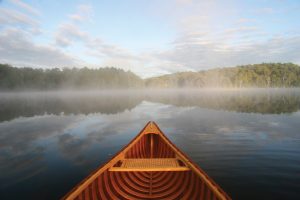As April begins, so does the hunt for the prized morel as they start to peek through the leaf litter on the forest floor in southern Illinois. As spring weather spreads, mushrooms will progressively pop up farther north. By the 15th or 20th, foraging starts in central Illinois and spreads northward. As a rule, morels can be found through most of the state until Mother’s Day.
For the novice forager looking to learn more, many helpful YouTube videos give insight on harvesting mushrooms, and the local library hosts a wealth of information with guidebooks specifically for mushroom hunters. However, there is no better way to learn than the hands-on approach.
I suggest finding a veteran mushroom hunter willing to show a new guy the ropes. Getting a willing volunteer may take some begging, pleading or bribing as most mushroom hunters are usually reluctant to show or share their hunting spots.
Biologists recommend mushroom foragers use a fine open-mesh bag to carry their mushrooms. An open weave bag allows mushroom spores to escape as the forager walks through the woods, helping ensure future reproduction.
Morels are one of the easiest mushrooms to identify. They are bulbous with honeycomb-like ridges and have pits in the cap. Stem attachment is at the base of the cap and completely attached along the bottom ridge. Morels are always hollow from the bottom of the stem to the tip of the cap.
Should you encounter the proverbial mother lode and have more than you can eat, save them for future use. Simply split the mushrooms from top to bottom and soak in a salt water solution (2 tablespoons of salt to 1 quart of water) in the refrigerator overnight. Rinse, pat dry and spread the pieces in a single layer on wax paper on a cookie sheet, and place in the freezer. Once frozen, stack in layers separated by wax paper in a storage container and keep frozen.
To use them, preheat cooking oil and prepare a thin, wet batter. Quickly take a frozen mushroom, dip in the batter and drop into the hot oil. Work quickly, and put the remaining frozen mushrooms back in the freezer. I have successfully kept mushrooms up to 4 years using this method with little loss of quality.
While Illinois doesn’t require a license for mushroom hunting, collectors always need landowner permission and, on public sites, must adhere to approved collecting regulations and hours. Collecting is allowed in many Illinois state parks and recreation areas, but is prohibited in any area designated as a dedicated nature preserve. Areas under the jurisdiction of the Illinois Department of Natural Resources offering spring turkey hunting are closed to mushroom collecting until after 1 p.m. daily to ensure the safety of all hunters/collectors. Restrictions apply until the close of wild turkey hunting season on May 9 in the southern zone and May 16 in the northern zone.
Mushroom hunters are urged to call ahead to learn of any site-specific regulations regarding mushroom collecting. State Parks website: www2.illinois.gov/dnr/Parks/Pages/default.aspx
Public Lands website: www2.illinois.gov/dnr/hunting/Pages/PublicHuntingAreas.aspx










